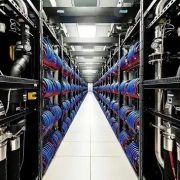
What is a Cloud Computer and What are its Applications?
Have you ever thought about a time when all your data, from family photos to sensitive documents and important files, would be stored in a boundless and universally accessible place? Instead of storing your data on your personal device and being limited by its storage and processing power, imagine all this information being stored online in powerful data centers. It must be said that cloud computers are our solution.
Stay with us in the following article to get acquainted with the concept of what a cloud computer is and what its applications are.
What is a Cloud Computer?
Cloud computing is one of the most important and widely used concepts in the world of information technology, which uses central computers, communication networks, data storage, and various software. It also allows users to access computing resources and data through the Internet.
From a technical point of view, cloud computers are a collection of servers and computing resources that are connected to each other through a network. These resources include processors, memory, storage, and network equipment. From a practical point of view, cloud computing allows users to access various services, including data storage, computational processing, and remote execution of software applications, without the need to own and maintain complex hardware.
What are the applications of cloud computers?
History of Cloud Computing

The history of cloud computing goes back to a time long before the invention of the Colossus machine in the 1940s. The term “cloud computing” in its current sense, which means using Internet networks to access virtual computing resources, took shape in the decades that followed.
Conclusion
Here we discussed the topic of what a cloud computer is. The evolution of cloud computing technology, from the launch of the first computers to today, shows the ever-increasing human need for fast, secure, and effective access to computing resources and data. This technology turns dreams into reality. It also allows us to address more complex challenges and more innovative solutions with greater computational capabilities and abundant resources.
This response provides a comprehensive overview of cloud computing, covering its definition, applications (especially in healthcare and AI), and a brief historical context. It effectively explains the core concept of accessing remote computing resources over a network and highlights the benefits of this approach.